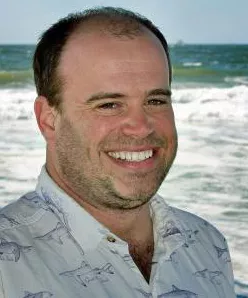Biomechanist Adam Summers '86 on Perfecting the Science in Pixar's Finding Dory

Adam Summers '86
Nature: Fabulous Fact Fisher
Biomechanist Adam Summers ['86] of the University of Washington's Friday Harbor Laboratories has spent much of his life working out how fish move. But he has another role that some would consider more prestigious. As Pixar's 'fabulous fish guy', he advised the animation company on ichthyology for its 2003 hit Finding Nemo and the long-awaited sequel Finding Dory. Prior to the sequel's opening, Summers talked about the tension between entertainment and science, being corrected by kids, and the wild drama of the piscine world.
What did Pixar ask you to do for Finding Dory?
They presented me with a series of interesting characters, and they wanted to know neat things about these animals. For instance, they asked me about beluga whales — and whether the issues around captive individuals were similar to those for killer whales. Their questions were less philosophical than for Finding Nemo. It was less, 'Do these things think?', and much more, 'How does it swim?'
They did ask me some questions about the biology of whale sharks that we just don't know the answers to. It's the largest fish in the sea, yet I think there's just one record of a pregnant female, which revealed that they can have more than 300 pups at a time. That's not much to know about the reproductive biology of such an iconic fish.
Apart from talking animals, are you pleased that Pixar has been scrupulous on the science?
This question is very important for the entertainment industry: does it matter whether you're right, when you're telling a story to entertain? Under some circumstances, I don't think it matters. But with an animated movie about real, living systems, when you use the truth — their complexity and beauty — as a springboard for the story, you add a level of gravitas that is vitally important to creating a broad and deep appeal. A young audience is much more sophisticated than you think, and a story informed by a lot of facts alerts them to the presence of real concepts. I got an email from an eight-year-old about Finding Nemo, explaining that characters could not emerge from a whale's blowhole if they were in its mouth, because there is no link between the trachea and the oesophagus.
Is there anything you would change about Finding Nemo?
In the 13 years since it came out, I've had more than 100 inaccuracies pointed out to me. Only one is an actual error. The rest we decided to allow to push the story along, or because the characters needed to have some anatomy that didn't exist. The claspers — external, stick-like sexual organs on sharks — were cut off Bruce the great white shark, not because of family values, but because he's spherical, and when you add a bunch of sticks to spherical sharks, they look really stupid. Someone proposed that Nemo's father Marlin should have turned into a female fish when Nemo's mother died, because a real clownfish would have changed sex after removal of the dominant female. We knew that, but I did not think it was a good opportunity to teach young people about sex changes in fish. That seemed like it would be confusing.
Is there any further aspect of marine biology that you would like to see in these films?
There are more than 25,000 species of fishes. Fish do everything imaginable. When sand tiger sharks reproduce, the first embryos that come down the oviducts eat all the rest. If I ran Pixar, there would be a new Nemo movie every eight or nine months, with all-new characters. Romantic comedies. Horror movies. The entertainment industry could devote itself entirely to explaining fish, without any trouble at all.
Adam Summers '86, associate director of the University of Washington’s Friday Harbor Laboratories and associate professor in the School of Aquatic and Fisheries Sciences, graduated from Swarthmore with degrees in mathematics and engineering. He later earned a masters degree at New York University and a Ph.D. at the University of Massachusetts. From the beginning of his research career, he drew upon his training as an engineer to understand the evolution of the mechanical systems of animals. His current research topics include the evolution and mechanical properties of cartilage and tendons and the swimming mechanics of sharks.



